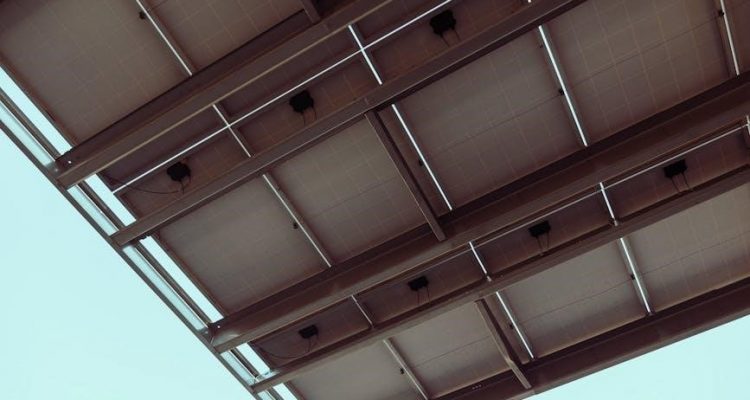Solar panel wiring is the backbone of any photovoltaic system, connecting panels to charge controllers, inverters, and batteries. Proper wiring ensures efficient energy transfer, safety, and system longevity.
What is Solar Panel Wiring?
Solar panel wiring refers to the electrical connections between solar panels, charge controllers, inverters, and batteries. It involves configuring panels in series or parallel to achieve desired voltage and current levels. Proper wiring ensures safe energy flow, protects components from overloads, and maximizes system efficiency. This process requires understanding electrical principles, safety protocols, and system design. Wiring diagrams are essential for planning and executing installations correctly, ensuring reliable performance and longevity of the solar power system.
Importance of Proper Wiring in Solar Systems
Proper wiring in solar systems is critical for safety, efficiency, and performance. It ensures that energy generated by panels is safely and effectively transferred to inverters, batteries, and electrical loads. Correct wiring prevents risks like electrical fires, system overloads, and component damage. It also maximizes energy production, reduces maintenance needs, and extends system lifespan. Additionally, proper wiring ensures compliance with electrical codes and regulations, safeguarding both the system and its users from potential hazards;
Basic Components of a Solar Panel System
A solar panel system consists of key components essential for converting sunlight into usable electricity. Solar panels, or photovoltaic modules, convert sunlight into DC power. Charge controllers regulate energy flow to batteries, preventing overcharging. Deep-cycle batteries store excess energy for later use. Inverters convert DC power to AC for household appliances. Mounting hardware secures panels, while wiring and connectors ensure safe and efficient energy transfer. These components work together to provide a reliable and efficient renewable energy solution.
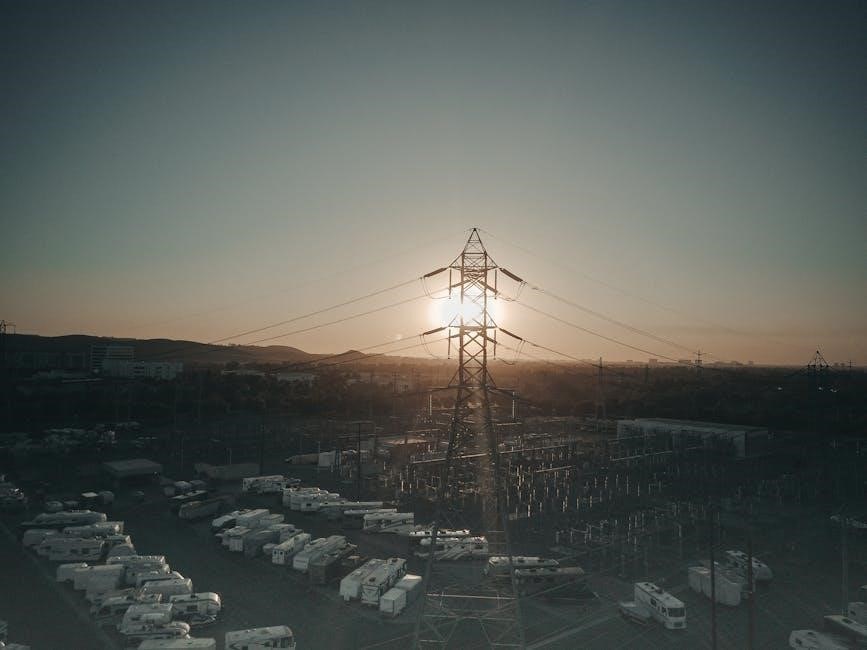
Understanding Solar Panel Components
Understanding solar panel components is crucial for harnessing renewable energy efficiently. Solar modules, charge controllers, inverters, and batteries work together to convert sunlight into usable power, ensuring system reliability and optimal performance.
Solar Panels (Modules)
Solar panels, also known as solar modules, are the heart of any solar energy system. They consist of silicon cells that convert sunlight into electrical energy through photovoltaic technology. Available in types like monocrystalline, polycrystalline, and thin-film, they vary in efficiency and cost. Proper installation and mounting are crucial for maximizing energy production. Panels are typically connected in series or parallel to achieve desired voltage and current levels, forming the foundation of a solar panel wiring system. Their efficiency and durability directly impact overall system performance.
Solar Charge Controllers
A solar charge controller regulates the energy flow from solar panels to batteries, preventing overcharging and ensuring safe charging. Available in PWM (Pulse Width Modulation) and MPPT (Maximum Power Point Tracking) types, MPPT controllers are more efficient, optimizing energy harvesting. They protect systems from overvoltage, reverse polarity, and short circuits, ensuring batteries charge efficiently and prolonging their lifespan. Proper installation of charge controllers is vital for maintaining system performance, reliability, and safety in solar panel wiring configurations, making them indispensable in off-grid and hybrid setups.
Inverters and Their Role
Inverters are essential components in solar panel systems, converting DC power from solar panels to AC power for household use. They ensure compatibility with appliances and grid connections, optimizing energy flow. Modern inverters offer advanced monitoring, enabling real-time tracking of performance and quick issue detection. They also provide safety features like arc fault protection. High-efficiency inverters minimize energy loss, ensuring maximum system performance and reliability, making them a critical part of any solar wiring setup.
Batteries for Storage Systems
Batteries are crucial for storing excess energy generated by solar panels, ensuring power availability during nighttime or grid outages. Deep-cycle batteries, like lead-acid or lithium-ion, are commonly used due to their durability and depth of discharge capabilities. Proper sizing and wiring of batteries are essential for efficient energy storage and system safety. Regular maintenance, such as checking electrolyte levels and terminal connections, ensures optimal performance. Batteries extend solar system functionality, providing reliable backup power and enhancing energy independence for homes and businesses.
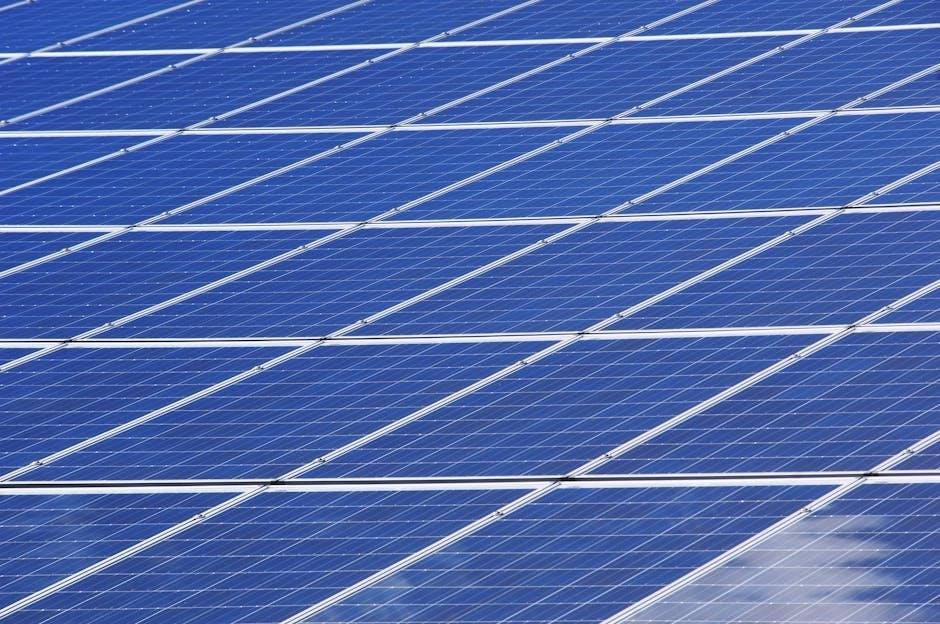
Planning Your Solar Panel System
Assess energy needs, choose the right system size, and understand series and parallel configurations to optimize performance. Create a wiring diagram to ensure safe and efficient connections.
Assessing Energy Needs
Evaluating your energy requirements is the first step in designing an efficient solar panel system. Calculate your daily energy consumption by reviewing past electricity bills or monitoring appliance usage. Consider the power ratings of all devices and the number of hours they operate. This helps determine the total wattage needed. Additionally, assess your energy goals—whether you want to power critical loads or achieve full off-grid independence. Accurate assessment ensures the system is appropriately sized for your needs, avoiding undersupply or oversupply. Use online tools or consult professionals for precise calculations.
Choosing the Right System Size
Selecting the appropriate system size is crucial for meeting energy demands without overspending. Start by calculating your total energy needs, then consider the space available for panels and your budget. Use solar sizing calculators or consult professionals to determine the ideal number of panels and their configuration. Proper sizing ensures your system operates efficiently, providing reliable power while minimizing costs. This step balances energy requirements with practical limitations, ensuring optimal performance and long-term satisfaction.
Understanding Series and Parallel Configurations
Solar panels can be connected in series or parallel to achieve desired voltage and current levels. Series connections increase total voltage while current remains constant, suitable for charge controllers. Parallel connections maintain voltage but increase current, ideal for charging batteries. A combination of both offers flexibility, optimizing system performance. Understanding these configurations is key to designing efficient and safe solar systems, ensuring compatibility with inverters and batteries while meeting energy requirements effectively.
Creating a Wiring Diagram
A wiring diagram is a visual guide that illustrates the connections between components in a solar panel system. It typically includes solar panels, a charge controller, battery, inverter, and safety devices like fuses. The diagram shows how power flows from panels to the charge controller, then to the battery, and finally to the inverter. Proper labeling, color-coding, and symbols help clarify connections. It ensures system safety, compatibility, and efficiency, guiding installation and troubleshooting effectively.
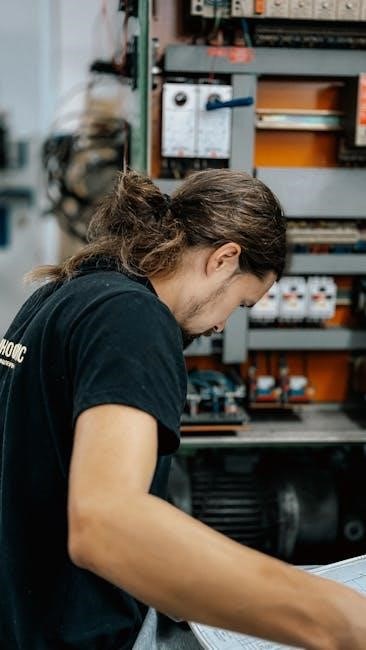
Safety Considerations in Solar Wiring
Ensure proper handling of high voltages, secure connections, and compliance with electrical codes to prevent hazards like shocks or fires, safeguarding people and equipment effectively.
Electrical Safety Precautions
Always disconnect power sources before handling solar wiring to avoid electrical shocks. Use insulated tools and wear protective gear like gloves and safety glasses. Ensure all connections are secure to prevent arcing. Never overload circuits, as this can cause fires. Keep wiring away from flammable materials and avoid damaged cables. Regularly test for voltage using multimeters to confirm de-energized systems. Follow NEC guidelines and local codes for installations. Proper labeling of wires can prevent accidental short circuits, ensuring a safer working environment for everyone involved.
Grounding and Bonding Requirements
Proper grounding and bonding are critical for solar panel systems to ensure safety and functionality. Grounding connects equipment to the earth, preventing voltage differences that could cause shocks or damage. Bonding ensures all metal components, like panels and mounting structures, are at the same electrical potential. Use ground rods and clamps to create a reliable earth connection. Follow local electrical codes for installation. Regularly inspect grounding systems to prevent corrosion or loose connections, which can compromise safety. Proper grounding protects against lightning strikes and equipment faults, ensuring a safe and efficient solar system operation.
Fuses and Circuit Breakers in Solar Systems
Fuses and circuit breakers are essential for protecting solar panel systems from overcurrent conditions. Fuses act as sacrificial devices, melting when excessive current flows, while circuit breakers trip and can be reset. Both prevent damage from short circuits or overloads. Install fuses in the solar array, between the charge controller and battery, and between the battery and inverter. Proper sizing and installation ensure reliability. Always follow electrical standards for sizing and placement to guarantee safety and system integrity. Regular inspections are crucial to maintain protection and performance.
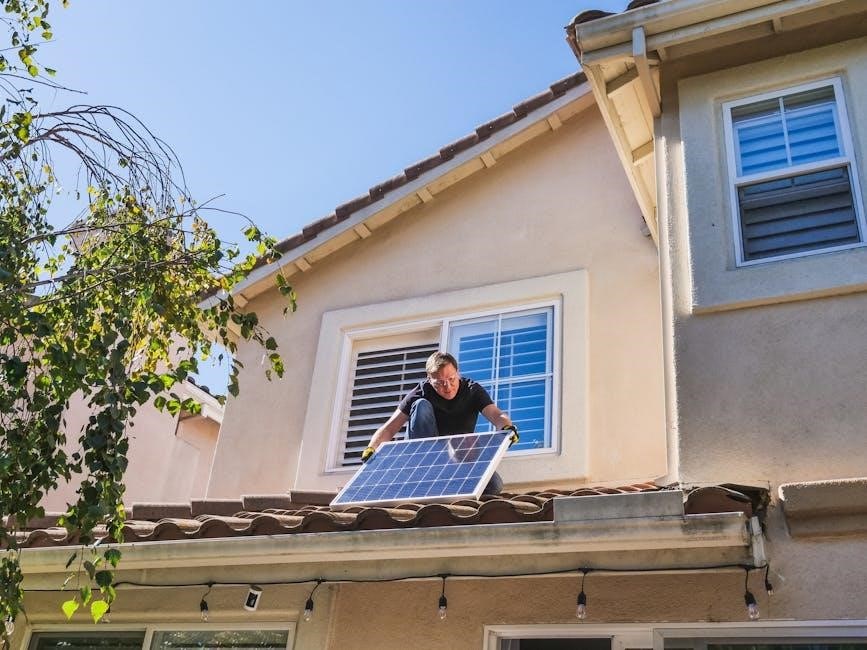
Wiring Configurations for Solar Panels
Solar panel wiring configurations optimize energy output by arranging panels in series, parallel, or a combination. Series increases voltage, while parallel boosts current, ensuring system compatibility and efficiency.
Series Wiring for Higher Voltage
Series wiring connects solar panels in a chain, increasing total voltage while maintaining current. This configuration is ideal for systems requiring higher voltage to match battery or inverter specifications. Each panel’s voltage adds up, enabling better charging efficiency in higher voltage applications. However, a single shaded panel can reduce overall performance. Series wiring simplifies the connection process and minimizes the number of connections, but careful planning is needed to avoid voltage drop issues; Proper sizing of conductors ensures safe and efficient energy transfer.
Parallel Wiring for Higher Current

Parallel wiring connects solar panels to increase total current while maintaining voltage. Each panel’s current adds up, enhancing system capacity for higher energy demands. This setup is ideal for systems requiring consistent voltage but needing more current. Parallel wiring offers redundancy, as one panel underperforming won’t significantly affect others. However, it requires larger conductors to handle increased current. Proper sizing of wires and connectors is crucial to minimize voltage drop and ensure efficient energy flow.
Combination of Series and Parallel Wiring
A combination of series and parallel wiring offers flexibility for solar systems. Panels are connected in series to increase voltage, and multiple series strings are linked in parallel to boost current. This setup allows customization to meet specific energy requirements while balancing voltage and current levels. It ensures compatibility with inverters and charge controllers, optimizing efficiency. Proper design minimizes energy loss and enhances system reliability, making it ideal for scalable installations.
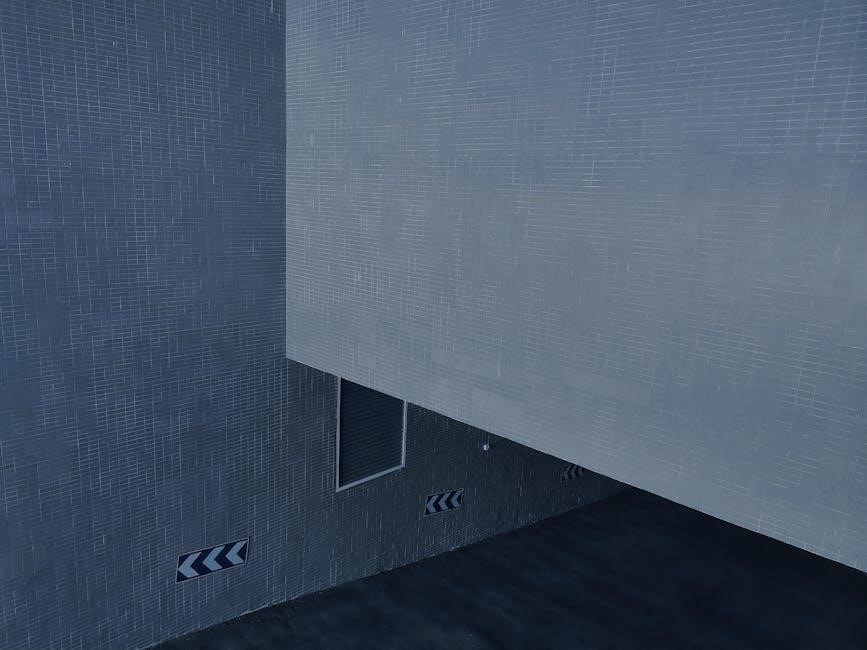
Tools and Materials Needed
Essential tools include multimeters, pliers, screwdrivers, and wire cutters. Recommended materials are MC4 connectors, fuses, circuit breakers, heat shrink tubing, and junction boxes for secure, weatherproof connections.
Essential Tools for Solar Wiring
Key tools for solar wiring include multimeters to measure voltage and current, wire cutters and strippers for preparing cables, and screwdrivers for secure connections. Pliers and crimping tools are essential for installing MC4 connectors. A voltage tester ensures safety during installations, while a drill and mounting hardware are needed for panel installation. Safety gear like gloves and goggles is crucial for protection. High-quality tools ensure reliable and long-lasting connections, reducing the risk of system failures and ensuring optimal performance over time.
Recommended Materials for Safe Connections
For safe solar wiring, use high-quality materials like MC4 connectors, solar cables, and junction boxes. MC4 connectors ensure secure, waterproof connections, while solar cables are designed to withstand UV exposure and outdoor conditions. Junction boxes and lugs provide durable, weather-tight connections. Heat shrink tubing and electrical tape are essential for insulation and protection against moisture. Always use gloves and safety glasses to prevent electrical shock and debris exposure. These materials ensure reliable, long-lasting connections and minimize the risk of electrical hazards in solar systems.
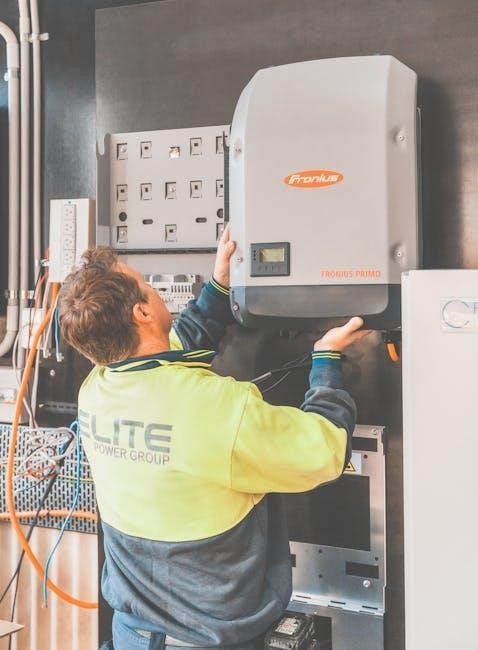
Step-by-Step Installation Guide
Mount panels securely, connect them to the charge controller, then link to the battery and inverter. Ensure all connections are tight and weatherproof. Test the system for safety and efficiency before full operation.
Mounting Solar Panels
Mounting solar panels requires careful planning to ensure optimal energy capture. Assess the location for sunlight exposure, avoiding shading. Use durable mounting hardware suitable for your roof or ground installation. Align panels at the correct angle and orientation for your latitude. Secure panels tightly to withstand weather conditions. Weatherproof all connections and ensure the structure is stable. Always follow manufacturer guidelines and safety precautions, such as wearing gloves and using a ladder safely. Proper installation ensures efficiency and longevity of the system.
Connecting Panels to the Charge Controller
Connect solar panels to the charge controller using appropriate cables, ensuring compatibility with the controller’s voltage and current ratings. Series or parallel configurations must match the controller’s input specifications. Carefully align positive and negative terminals to avoid short circuits. Secure connections tightly using screws or terminal lugs. Double-check wiring with a multimeter to confirm voltage and polarity. Refer to the controller’s manual for specific instructions. Proper connections ensure efficient energy transfer and system safety, preventing damage or electrical hazards.
Linking the Charge Controller to the Battery
Connect the charge controller to the battery using appropriately sized cables, ensuring correct polarity (positive to positive, negative to negative). Verify the controller’s settings match the battery type (e.g., lead-acid or lithium). Secure the connections firmly to prevent loose contacts. Always disconnect the system before making changes to avoid electrical hazards. Double-check the wiring with a multimeter to confirm proper voltage and current flow. Proper connection ensures efficient energy storage and system reliability, safeguarding against overcharging or undercharging the battery.
Connecting the Battery to the Inverter
Connect the battery to the inverter using heavy-duty cables, ensuring proper polarity (positive to positive, negative to negative). Verify the inverter’s voltage and current ratings match the battery’s specifications. Secure the connections tightly to prevent resistance issues. Always disconnect the system before modifying connections to avoid electrical shock. Use a multimeter to confirm voltage levels align with the inverter’s requirements. Proper connection ensures efficient energy conversion from stored DC power to usable AC power for household appliances.
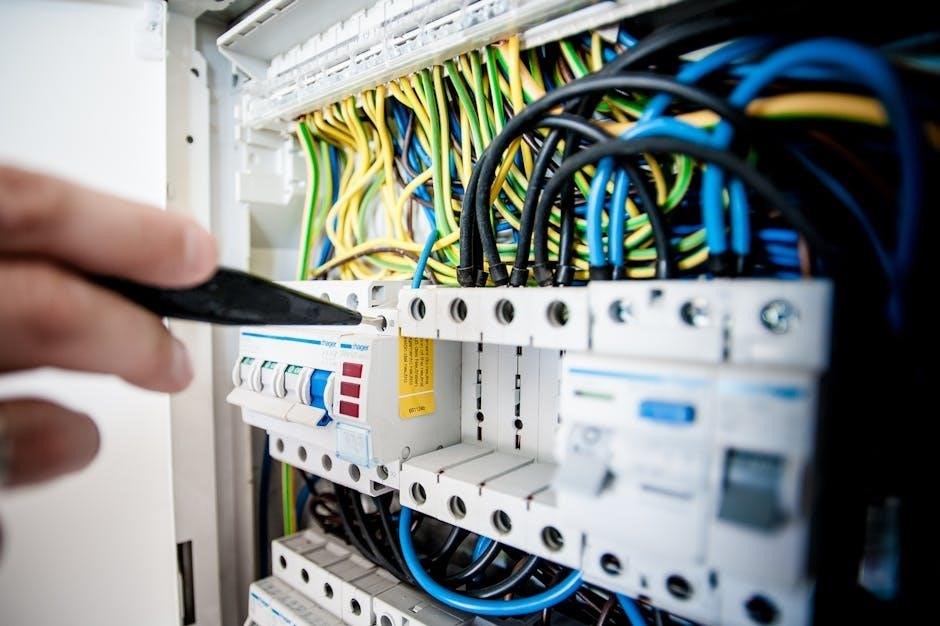
Monitoring and Maintenance
Regularly inspect solar panel connections, inverters, and batteries to ensure optimal performance; Clean panels to maintain efficiency and check for wear or damage in wiring components.
Importance of Regular Inspection
Regular inspection of solar panel wiring ensures system efficiency and longevity. It helps identify loose connections, damaged cables, or corrosion, preventing energy loss and potential hazards. Inspections enable early detection of issues like overheating or faulty components, allowing timely repairs. This maintenance routine minimizes downtime, optimizes energy production, and ensures safety. Regular checks also verify compliance with electrical standards, reducing the risk of fires or electrical failures. A well-maintained system performs better and lasts longer, making inspections a critical part of solar panel ownership.
Using Monitoring Systems for Performance Tracking
Monitoring systems are essential for tracking solar panel performance. They provide real-time data on energy production, voltage, and current, helping identify inefficiencies. Advanced systems offer remote access via apps or dashboards, enabling users to monitor performance from anywhere. They also detect faults or underperformance, ensuring timely interventions. Monitoring systems help optimize energy usage, reduce losses, and maximize system efficiency. By analyzing performance data, users can make informed decisions to improve their solar panel setup and overall energy management. Regular tracking ensures sustained productivity and reliability.
Troubleshooting Common Wiring Issues
Identifying and resolving wiring issues is critical for solar system efficiency. Common problems include open circuits, short circuits, or ground faults. Use a multimeter to check voltage and current flow. Inspect connectors for damage or corrosion and ensure secure connections. Verify wiring configurations match the system design. Consult the wiring diagram to trace issues. Regular inspections and timely repairs prevent energy losses and ensure safety. Addressing wiring problems promptly helps maintain optimal performance and extends system longevity.

Best Practices and Future Trends
Optimize energy efficiency by adhering to safety standards and using cutting-edge technologies. Future trends include smart inverters, advanced wiring materials, and AI-driven monitoring systems for enhanced performance.
Optimizing Energy Efficiency
Optimizing energy efficiency in solar panel wiring involves proper sizing of conductors to minimize voltage drop and power loss. Use high-quality, thicker cables to reduce resistance. Ensure panels are angled and positioned to maximize sunlight exposure. Minimize shading on panels, as even partial shade can significantly reduce efficiency. Regularly inspect and clean panels to maintain optimal performance. Consider using MPPT charge controllers to optimize energy transfer from panels to batteries. Properly route cables to avoid overheating and ensure all connections are secure and weatherproof.
Advancements in Solar Wiring Technology
Recent advancements in solar wiring technology include the development of smart wiring solutions, such as module-level power electronics and advanced inverters. These innovations improve efficiency and safety by allowing real-time monitoring and optimization of energy flow. High-efficiency connectors and cables with improved durability are reducing losses and extending system lifespan. Additionally, wireless monitoring systems and automated fault detection are enhancing maintenance and performance tracking. Future trends may include integrated wiring harnesses and AI-driven energy management systems for even greater efficiency and reliability.
